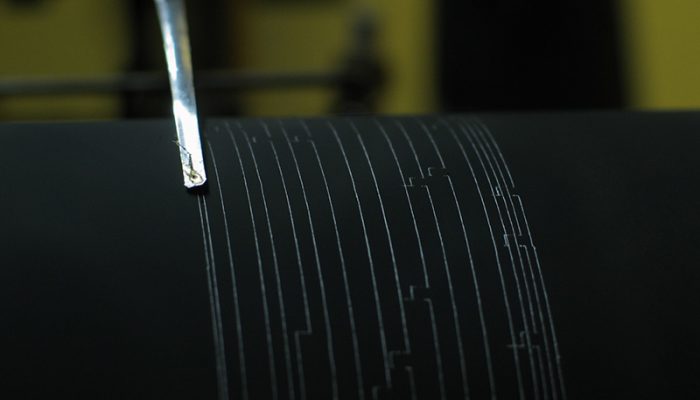
Beginning of this month, I was travelling to Germany to visit family and friends. One week out of the office, without interpreting wiggles or creating synthetic seismograms. But I bet that most of you know that vacation from science does not really exist, especially if an awesome opportunity comes along…
What do seismologists do during their vacation?
I was visiting a friend in Göttingen. Maybe you have heard about this German city beforehand – of course in the context of seismology. You might think of Emil Wiechert and his seismographs, Karl Zoeppritz and his equations, Beno Gutenberg or lots of other seismologist, who all worked in Göttingen.
Emil Wiechert (1861-1928) came to Göttingen in 1898 and started building the seismological observatory. Using the data of the seismographs, he carried out research to uncover the mysteries hidden inside the Earth. For years to come, important research was done by a lot of seismologist at the observatory. Beginning of the 21th century the golden times of the seismological observatory seemed to be forgotten and the site was on the verge of being teared down. But luckily in 2005 an association was formed that restored the site and takes good care of it now. The Wiechert’sche Erdbebenwarte Göttingen e.V. (Wiechert Earthquake Station Association) offers a guided tour on the first Sunday of every month between 2 and 5 pm to show the public around the observatory.
So I dragged my non-seismologist friend to the Erdbebenwarte – no, actually he was as excited as I was. All started with a very neat general introduction to seismology that was suitable for everybody, from the little kid to the grown-up seismologist. You could also listen to witty anecdotes about how the association struggled with German bureaucracy.
I don’t want to reveal too much because it is much nicer to experience it by yourself. But let me give you a sneak peek of what we saw and experienced there.
Exploration seismology in the early 20th century
Ludger Mintrop (1880-1956) dropped a 4-ton steel ball from a 15 meters height scaffolding to create artificial earthquakes to look inside the earth using transportable seismometers. Well, transportable seismometers at that time were still on the heavy side (~ 700 kg).
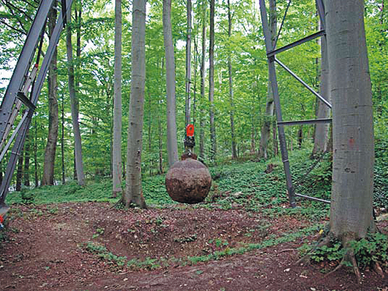
Mintrops 4-ton steel ball. Photo by Wiechert’sche Erdbebenwarte e.V.
The association restored the scaffolding and now they drop the ball every time visitors are around. To hear and to feel the bump of the 4-ton steel ball was amazing. And the first thought that popped in my mind: “It would be a lot of fun to create seismograms the old fashioned way.” Of course, nowadays this is not efficient for us anymore, but I can dream, right?
The oldest working seismograph
Even though seeing the Mintrop ball fall down and feeling the impact was impressive, the best was yet to come: seeing the oldest, still working seismographs that already Wiechert had looked at.
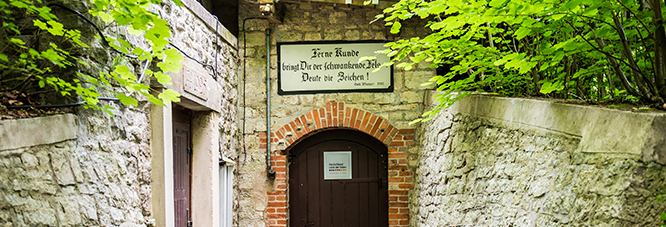
Entrance to the seismograph room. Photo by Wiechert’sche Erdbebenwarte e.V.
The seismographs at this site were built in 1902 and 1904/05, and doing their duty already for way over 100 years.
“Every seismologist should kneel before this site.”
I was looking around when Wolfgang Brunk, our guide and chairman of the association, said those words and I decided it would have been too embarrassing for me to kneel down. But he is right, it is a very special place especially for seismologists. The doors were opened and we entered the room that houses the oldest working seismographs in the world.
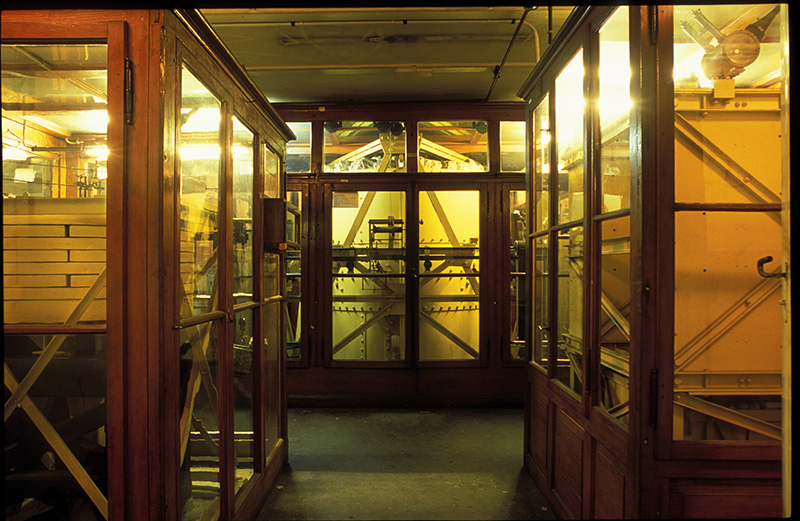
Inside the “holy grail” of seismology. The seismographs build in the beginning of the 20th century are still running. Photo by Wiechert’sche Erdbebenwarte e.V.
I enjoyed the guided tour a lot, definitely the best day in 2016 thus far. It is a very cool “scientific adventure park” for the whole family.
With love to detail the association did and still does an amazing job to keep Wiechert’s legacy alive and to bring the seismology in an easy and fun way to the people. Next time you are in Germany, you definitely have to visit the seismological station in Göttingen! You can either do that on the first Sunday of every month between 2 and 5 pm, or you contact the association to find the most convenient time for a private tour.
Are there similar sites that you visited during your vacation? Comment here! Maybe we can come up with a guide about “seismological vacation” worldwide.
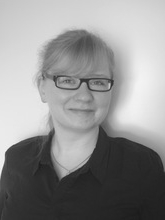 Kathrin Spieker is one of the EGU ECS-representatives of the Seismology division. She is a PhD student in seismology at the Department of Earth Science of the University of Bergen (Norway) and investigates globally the crustal and upper mantle structure using passive seismic imaging with the focus on teleseismic converted waves. You can contact Kathrin via e-mail: Kathrin.Spieker@uib.no.
Kathrin Spieker is one of the EGU ECS-representatives of the Seismology division. She is a PhD student in seismology at the Department of Earth Science of the University of Bergen (Norway) and investigates globally the crustal and upper mantle structure using passive seismic imaging with the focus on teleseismic converted waves. You can contact Kathrin via e-mail: Kathrin.Spieker@uib.no.
